Table of Contents
- Introduction
- 1. Why Temperature Matters in Vaporization
- 2. Boiling Points of Key Herbal Compounds
- 3. How Temperature Affects Flavor, Effect, and Efficiency
- 4. The Fine Line Between Vaporization and Combustion
- 5. Flame-Powered Precision: Manual Doesn’t Mean Guesswork
- 6. Why Some Devices Handle Temp Better Than Others
- 7. Personalizing Your Experience: A Temperature Guide
- Conclusion
- About the Author
The Science of Vaporization: Why Temperature Control Matters
Vaporization isn’t just a cleaner alternative to smoking — it’s a precision-based science. What separates a great vaporizing experience from a harsh, disappointing one? In many cases, it’s temperature.
Each plant contains a variety of compounds — cannabinoids, terpenes, flavonoids, alkaloids — each with its own boiling point. Set the temperature too low, and you might miss the full effect. Go too high, and you risk combustion, irritation, or destroying the very flavors you're after.
This guide dives deep into the science of heat and herbs. You'll learn why temperature control matters, what specific compounds vaporize at, and how to harness that knowledge with tools like the Vapman Click and Lotus Vaporizer — both flame-powered devices designed for analog precision without electronics.
1. Why Temperature Matters in Vaporization
Temperature is the single most important variable in the vaporization process. Why? Because different compounds in your herb boil off (evaporate) at different temperatures. Vaporizing allows you to target these compounds by applying just enough heat — but not so much that you burn the plant material itself.
Too low, and some of the most potent or flavorful components won’t activate. Too high, and you risk creating byproducts like benzene, formaldehyde, or even triggering combustion.
According to a widely cited 2017 review in the journal Current Pharmaceutical Design, vaporization at controlled temperatures offers superior delivery of active compounds while minimizing exposure to toxins — especially when compared to combustion-based smoking.
The goal of vaporization is efficiency, purity, and flavor. And all three depend on one thing: temperature.
2. Boiling Points of Key Herbal Compounds
To understand vaporization, we need to know what we’re trying to release. Herbs like cannabis, lavender, and chamomile contain hundreds of compounds, each with a unique boiling point. These include:
- THC (Delta-9-Tetrahydrocannabinol): ~157°C (315°F)
- CBD (Cannabidiol): ~160–180°C (320–356°F)
- CBN (Cannabinol): ~185°C (365°F)
- Myrcene (sedative terpene): ~166–168°C (330–334°F)
- Limonene (uplifting citrus terpene): ~176°C (349°F)
- Linalool (floral, calming): ~198°C (388°F)
- THCV (stimulating cannabinoid): ~220°C (428°F)
As you can see, if you’re vaporizing at a single fixed temperature, you may be missing entire classes of compounds. That’s why layered sessions or adjustable heating (manually or digitally) matter so much for a full-spectrum experience.
By learning the temperature ranges of your herbs, you can fine-tune your sessions for relaxation, stimulation, or targeted therapeutic effects.
3. How Temperature Affects Flavor, Effect, and Efficiency
Different temperatures don’t just release different compounds — they completely alter the experience of vaporizing. Let’s break it down:
Low Temperatures (160–180°C / 320–356°F)
- Effect: Clear-headed, functional, gentle buzz
- Flavor: Most aromatic — rich in terpenes
- Best for: Daytime use, productivity, microdosing
Medium Temperatures (180–200°C / 356–392°F)
- Effect: Balanced — both cerebral and body effects
- Flavor: Smooth with minor density increase
- Best for: Relaxation, creativity, evening use
High Temperatures (200–225°C / 392–437°F)
- Effect: Heavier, more sedative, couch-lock potential
- Flavor: Earthier, denser, more pungent
- Best for: Sleep, deep physical relief, full extraction
Temperature gives you the power to steer your session. Whether you want gentle clarity or deep relaxation, choosing the right range makes all the difference.
4. The Fine Line Between Vaporization and Combustion
The moment your herb hits temperatures above ~230°C (446°F), you start risking combustion. This is where the plant matter chars, producing smoke, ash, and toxins such as carbon monoxide, tar, and benzene — defeating the entire purpose of vaporizing.
According to clinical trials from UCSF, vaporizers that allow tight control over temperature significantly reduce respiratory symptoms compared to smoking, but only if combustion is fully avoided.
That’s why design matters. With some electric devices, it’s hard to know what’s really happening in the chamber. With manual devices like the Vapman Click, a click-disc alerts you when you’ve reached optimal temp — and before combustion begins. The Lotus Vaporizer uses a heat cap to disperse flame energy evenly, minimizing risks.
Understanding this line — and staying below it — is the foundation of clean vaporization.
5. Flame-Powered Precision: Manual Doesn’t Mean Guesswork
Many users assume that battery-powered vaporizers are the only way to achieve precise temperature control. But that’s not true. In fact, well-designed manual vaporizers can offer surprising accuracy — often without the need for electronics at all.
For example, the Vapman Click features a state-of-the-art click disc embedded into its design. As you apply a flame to the base, the disc audibly clicks when it reaches the optimal vaporization temperature. It then clicks again as it cools down — providing simple but effective feedback that rivals digital sensors.
This means you can consistently reach and maintain the right temperature with just your torch and your senses — no screen, no app, no guesswork.
The Lotus Vaporizer uses a patented metal cap to distribute heat evenly over the herb chamber. The flame never touches the material directly, and with a bit of practice, users develop an intuitive feel for session control.
Flame-powered does not mean inaccurate. It means free, analog, and deeply personal — the way ritual is meant to be.
6. Why Some Devices Handle Temperature Better Than Others
Not all vaporizers are created equal — especially when it comes to heat consistency. Several design factors affect how accurately a vaporizer maintains temperature:
- Material conductivity: Copper, gold plating, and stainless steel heat quickly and evenly. Plastic and silicone can create hotspots or retain heat unpredictably.
- Chamber shape and airflow: Efficient air paths help regulate vapor temperature and prevent charring.
- Thermal mass: Heavier materials like mica or ceramic offer more stable heat, while thin walls can fluctuate.
Devices like the Vapman Click and Lotus are engineered for thermal stability and manual control. They avoid electronics but still deliver smooth, consistent vapor — because every detail has been designed for performance.
Meanwhile, cheaper electric vaporizers often suffer from temperature drift, faulty sensors, or unstable heat curves — especially after months of use.
Investing in the right materials and craftsmanship pays off — not just in vapor quality, but in reliability.
7. Personalizing Your Experience – A Temperature Guide
One of the most powerful benefits of vaporization is customization. By understanding the science of temperature, you can tailor your session to your specific needs, mood, and time of day.
Here’s how:
- For calm focus: Set your session around 170–175°C to vaporize pinene and limonene-rich herbs
- For relaxation: Try 185–195°C to activate linalool, myrcene, and CBN
- For sleep or deep relief: Go higher — 205–220°C — to extract heavier cannabinoids like THCV or CBC
Devices like the Vapman Click make this easy with click-based heating and full airflow control. The Lotus allows you to modulate convection force and bowl temperature by adjusting flame size and draw speed.
Over time, you'll develop a feel for temperature by taste and effect. That’s the true art of vaporization: listening to your herbs — and your body.
Conclusion
Temperature isn’t just a technical detail — it’s the foundation of effective, healthy, and flavorful vaporization. By learning how compounds behave at different heat levels, you gain the power to tailor your experience, preserve delicate aromatics, and avoid harmful byproducts.
Whether you’re microdosing during the day, relaxing in the evening, or exploring botanical blends for wellness, temperature is your tool — and with the right device, it's completely in your hands.
Manual vaporizers like the Vapman Click and Lotus Vaporizer are designed to give you that control — with none of the tech clutter. They turn heat into art, and vapor into ritual.
Ready to master the art of heat?
→ Explore our analog vaporizers and experience temperature control the natural way
About the Author

Author: Michael Mussner, Founder of INHALE Vaporizers
Michael is a passionate vaporizer designer and entrepreneur from South Tyrol, driven by craftsmanship, sustainability, and the mindful use of natural herbs. With a background in product innovation and a love for analog technology, he founded INHALE to revive flame-powered vaporizers like the Vapman and Lotus. Every product he creates is deeply rooted in authenticity, simplicity, and a respect for nature.
Questions? Contact us here or email support@nowinhale.com.



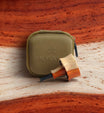

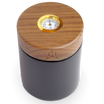
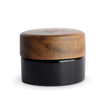


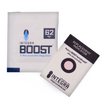


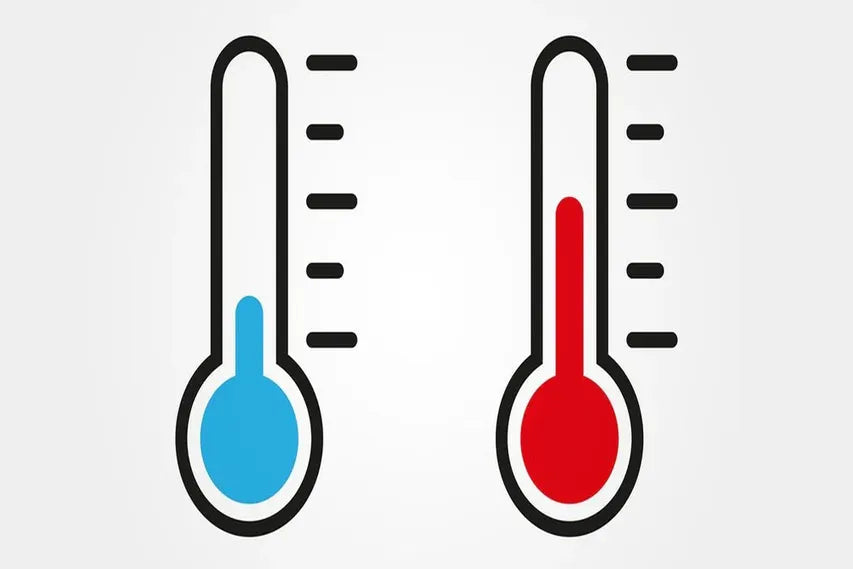




Leave a comment
All comments are moderated before being published.
This site is protected by hCaptcha and the hCaptcha Privacy Policy and Terms of Service apply.